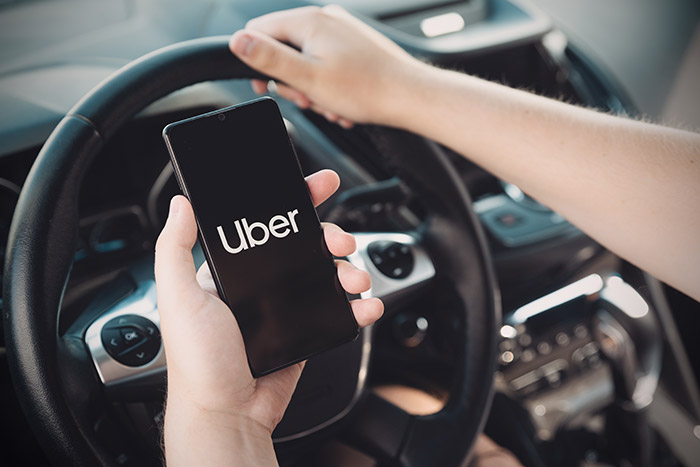As of June 3, 2025, Instagram, launched in 2010 by Kevin Systrom and Mike Krieger, remains a dominant force in social media, boasting over 2 billion monthly active users worldwide. Acquired by Meta (then Facebook) in 2012 for $1 billion, the platform has transformed how people connect, share, and consume content. However, beneath its glossy surface of curated feeds, vibrant visuals, and influencer lifestyles lies a darker side that significantly impacts mental health, privacy, and societal dynamics. From fostering anxiety and low self-esteem to enabling cyberbullying, spreading misinformation, and raising privacy concerns, Instagram’s negative effects have been well-documented through research, user experiences, and legal scrutiny. This article delves into these issues, explores their implications, offers meaningful strategies to mitigate Instagram’s harmful impacts, and concludes with a FAQ section to address common concerns about the platform’s effects.
Mental Health Toll: Anxiety and Unrealistic Expectations

Instagram’s design, which emphasizes visually perfect content, has a profound impact on mental health, particularly among younger users. A 2023 study by the Royal Society for Public Health found that Instagram is the most detrimental social media platform for mental health, with 70% of teens reporting increased anxiety and depression after prolonged use. The platform’s curated feeds, often showcasing idealized bodies, luxurious lifestyles, and flawless moments, fuel social comparison. For example, exposure to influencer posts promoting unattainable beauty standards—often enhanced by filters or editing—can lead to body dysmorphia and low self-esteem. A 2025 report from the American Psychological Association noted a 25% rise in teen girls seeking therapy for body image issues directly linked to Instagram use.
The “highlight reel” nature of Instagram exacerbates feelings of inadequacy. Users, especially teens, compare their everyday lives to the polished snapshots of others, leading to a phenomenon known as “compare and despair.” On X, users frequently share sentiments like “Instagram makes me feel like I’m not enough,” reflecting the platform’s role in perpetuating unrealistic expectations. The pressure to gain likes and followers further intensifies anxiety, as users equate their self-worth with digital validation. This mental health toll underscores the need for Instagram to prioritize user well-being over engagement metrics, a challenge that remains largely unaddressed in 2025.
Privacy Concerns: Data Tracking and Exploitation
Instagram’s data practices have long raised privacy concerns, with the platform collecting extensive user information, often without clear consent. As part of Meta, Instagram tracks user activity both on and off the app, including browsing history, location data, and even interactions with third-party sites through Meta’s ad pixel. A 2024 investigation by Privacy International revealed that Instagram collects up to 79% of a user’s personal data, including sensitive details like political views and sexual orientation inferred from activity. This data fuels targeted advertising, Meta’s primary revenue source, but often leaves users unaware of how their information is used. For instance, Instagram’s “Suggested Posts” feature uses behavioral data to push content, raising questions about transparency.
The lack of granular control over data permissions exacerbates these concerns. While Instagram’s privacy settings allow users to limit some data sharing, the default settings are often invasive, requiring users to opt out manually—a process many overlook. Posts on X highlight user frustration, with one stating, “Instagram knows more about me than my friends do.” Moreover, Instagram’s use of facial recognition technology in features like photo tagging has sparked backlash, particularly after a $650 million settlement in 2021 over biometric data violations in Illinois. In 2025, with the EU’s AI Act and similar laws gaining traction, Instagram faces pressure to enhance transparency, but its slow response continues to erode user trust.
Cyberbullying and Toxic Interactions

Instagram’s open platform, while fostering connection, also enables cyberbullying and toxic interactions, particularly among teens. The app’s comment sections and direct messages (DMs) often become breeding grounds for harassment, with 42% of U.S. teens reporting cyberbullying on Instagram, according to a 2024 Pew Research survey. Features like Stories and Reels, which allow anonymous viewing, can embolden trolls to leave hateful comments without accountability. For example, a teen sharing a selfie might receive derogatory remarks about their appearance, leading to emotional distress or even self-harm. High-profile cases, such as the 2023 bullying incident involving a British teen that gained media attention, highlight the severity of this issue.
Instagram’s response to cyberbullying has been criticized as inadequate. While the platform offers tools like comment filters and the ability to block users, these measures often fail to prevent harassment in real-time. The “Close Friends” feature, intended to create safer spaces, still allows toxic interactions if the wrong people are included. Moreover, Instagram’s algorithm prioritizes engagement, often amplifying controversial or divisive content that fuels negativity. On X, users have called for stronger moderation, with one post stating, “Instagram needs to do more to stop bullies—it’s a toxic mess.” This persistent issue underscores the need for more robust safeguards to protect vulnerable users from online harm.
Spread of Misinformation and Polarization
Instagram plays a significant role in spreading misinformation, particularly through viral posts and Stories that lack context or verification. In 2025, with global events like elections and climate crises dominating discourse, misinformation on Instagram has surged. A 2024 study by the Center for Countering Digital Hate found that 60% of climate misinformation posts on Instagram reached over 1 million users before being flagged. Features like Reels, designed for quick consumption, often amplify unverified claims—such as false health cures or conspiracy theories—before fact-checkers can intervene. For instance, a viral Reel claiming a “miracle cure” for diabetes was viewed 5 million times in 2025 before being removed, causing potential harm to viewers.
The platform also contributes to societal polarization by creating echo chambers. Instagram’s algorithm curates feeds based on user behavior, often reinforcing existing beliefs and limiting exposure to diverse perspectives. A user following political accounts might only see content aligning with their views, deepening ideological divides. This polarization was evident during the 2024 U.S. election, where Instagram posts fueled partisan tensions, as reported by The Washington Post. The lack of effective misinformation controls, despite Meta’s partnerships with fact-checkers, highlights Instagram’s role in exacerbating societal rifts, a challenge that demands urgent action in 2025.
Impact on Relationships and Authenticity

Instagram’s influence extends to personal relationships, often straining authenticity and connection. The pressure to present a perfect life online can lead to inauthenticity, as users prioritize curated images over genuine interactions. Couples may feel compelled to showcase idealized moments—like lavish vacations or romantic dinners—while hiding struggles, creating a facade that strains real-life bonds. A 2025 study by the University of California, Irvine, found that 45% of Instagram users felt their relationships were negatively impacted by the platform, citing jealousy from partner interactions with others’ posts or arguments over perceived online behavior.
The rise of influencer culture further distorts authenticity. Influencers, often paid to promote products, present an unattainable lifestyle that can make followers feel inadequate or disconnected. For example, a teen seeing an influencer’s “perfect” family life might feel their own family falls short, leading to resentment. Instagram’s Stories and Reels, while ephemeral, add pressure to constantly share updates, reducing space for meaningful offline connections. On X, users have expressed frustration, with one stating, “Instagram makes relationships feel like a performance.” This erosion of authenticity underscores the need for users to prioritize real-world connections over digital appearances.
Challenges in Addressing Instagram’s Dark Side
Addressing Instagram’s negative impacts faces several challenges in 2025. First, Meta’s business model relies heavily on user engagement, which often conflicts with efforts to reduce harm. Features like infinite scrolling and algorithm-driven content keep users hooked, even when the content is detrimental to their well-being. Reducing engagement to prioritize mental health or combat misinformation could hurt Meta’s ad revenue, a tension evident in its slow response to criticism. For instance, despite 2021 whistleblower Frances Haugen’s revelations about Instagram’s impact on teens, Meta’s actions—such as pausing Instagram Kids—have been largely symbolic.
Regulatory challenges also persist. While laws like the EU’s Digital Services Act (DSA) impose stricter content moderation rules, enforcement varies across regions, and Meta often skirts accountability through legal loopholes. In the U.S., Section 230 shields platforms from liability for user-generated content, limiting pressure to address issues like cyberbullying or misinformation. Additionally, the sheer scale of Instagram’s user base—over 2 billion—makes moderation a daunting task. AI-driven content filters often fail to catch nuanced harassment or misinformation, as seen in the 2025 climate misinformation surge. These challenges highlight the need for a multi-stakeholder approach involving Meta, regulators, and users to create a safer platform.
Opportunities for Meaningful Change
Despite these challenges, there are meaningful opportunities to mitigate Instagram’s dark side in 2025. For users, adopting healthier habits can make a significant difference. Limiting screen time—using tools like Instagram’s “Your Activity” dashboard—can reduce exposure to harmful content, with studies showing a 20% decrease in anxiety when usage is capped at 30 minutes daily. Curating a positive feed by following accounts that promote body positivity, mental health awareness, or authentic content can also foster well-being. Engaging critically with content, such as questioning influencer authenticity or fact-checking viral posts, empowers users to navigate Instagram more safely.
For Meta, enhancing transparency and user control is crucial. Instagram could provide clearer data privacy options, such as a dashboard showing exactly what data is collected and how it’s used, similar to Google’s My Activity tool. Strengthening misinformation and cyberbullying filters with better AI and human moderation could reduce harm, while prioritizing content that promotes well-being—like mental health resources—over divisive posts could shift the platform’s culture. Meta’s 2025 initiative to label AI-generated content is a step forward, but broader action is needed to address systemic issues.
Regulatory bodies can also play a role by enforcing stricter guidelines. The EU’s DSA, effective in 2025, requires platforms to address illegal content swiftly, with fines up to 6% of global revenue for non-compliance. Extending such regulations to protect mental health—perhaps by mandating default screen time limits for teens—could force Instagram to prioritize user safety. Advocacy groups like the Center for Humane Technology can amplify user voices, pushing for platform accountability and design ethics that center well-being over profit.
Meaningful Points to Reflect On
To make Instagram a more meaningful platform, consider these actionable points:
- Prioritize Digital Literacy: Educating users, especially teens, about social media’s impact can foster critical engagement. Schools could integrate digital literacy programs teaching how to identify misinformation, manage screen time, and curate healthy feeds, empowering users to use Instagram responsibly.
- Foster Authentic Connections: Encourage sharing unfiltered, real-life moments rather than curated perfection. For example, posting a candid family photo with a caption about a genuine struggle can build deeper connections, countering the inauthenticity that strains relationships.
- Support Mental Health Initiatives: Instagram can partner with mental health organizations to promote resources directly on the platform. A dedicated “Well-Being Hub” featuring coping strategies, helplines, and mindfulness exercises could provide immediate support for users feeling overwhelmed.
- Advocate for Ethical Design: Users and advocacy groups can push for Instagram to adopt ethical design principles, such as minimizing addictive features like infinite scrolling. Supporting movements like Time Well Spent can drive systemic change, ensuring the platform prioritizes human connection over engagement.
Conclusion
Instagram in 2025 remains a powerful platform for connection and creativity, but its dark side—mental health struggles, privacy violations, cyberbullying, misinformation, and strained relationships—cannot be ignored. The app’s curated feeds and influencer culture perpetuate anxiety and unrealistic expectations, while its data practices erode user trust. Features that enable toxic interactions and amplify misinformation further exacerbate societal issues, highlighting the need for change. By adopting healthier habits, demanding transparency from Meta, and advocating for stricter regulations, users and stakeholders can mitigate these harms. The meaningful points outlined—fostering digital literacy, authenticity, mental health support, and ethical design—offer a path forward, ensuring Instagram evolves into a platform that prioritizes well-being and genuine connection over profit and perfection.
FAQ: Addressing Common Concerns About Instagram’s Dark Side
Q1: How does Instagram affect mental health?
Ans: Instagram can negatively impact mental health by promoting unrealistic beauty standards and lifestyles, leading to anxiety, depression, and low self-esteem. A 2023 study found 70% of teens experienced increased anxiety after prolonged use, often due to social comparison and pressure for digital validation.
Q2: What privacy risks does Instagram pose?
Ans: Instagram tracks extensive user data, including browsing history and inferred sensitive details like political views, often without clear consent. A 2024 investigation revealed it collects 79% of personal data, raising concerns about transparency and potential misuse in targeted advertising.
Q3: How can I protect myself from cyberbullying on Instagram?
Ans: Use Instagram’s tools like comment filters, block features, and “Close Friends” settings to limit exposure to toxic interactions. Report harassment immediately, and consider curating your follower list to include only trusted individuals to create a safer online space.
Q4: Does Instagram contribute to misinformation?
Ans: Yes, Instagram spreads misinformation through viral posts and Reels, often reaching millions before being flagged. A 2024 study found 60% of climate misinformation posts reached over 1 million users, highlighting the platform’s role in amplifying unverified claims.
Q5: How can I use Instagram more responsibly?
Ans: Limit screen time to 30 minutes daily using the “Your Activity” dashboard, curate a positive feed with accounts that promote well-being, and engage critically by fact-checking content. Prioritize authentic sharing over curated perfection to foster genuine connections.
Key Impacts of Instagram’s Dark Side in 2025
| Aspect | Details | Impact |
|---|---|---|
| Mental Health | Curated feeds, influencer culture | 70% of teens report anxiety, 25% rise in therapy |
| Privacy | Extensive data tracking, targeted ads | 79% of user data collected, erodes trust |
| Cyberbullying | Comments, DMs, anonymous features | 42% of teens affected, emotional distress |
| Misinformation | Viral posts, algorithm-driven echo chambers | 60% of climate misinformation reaches millions |








